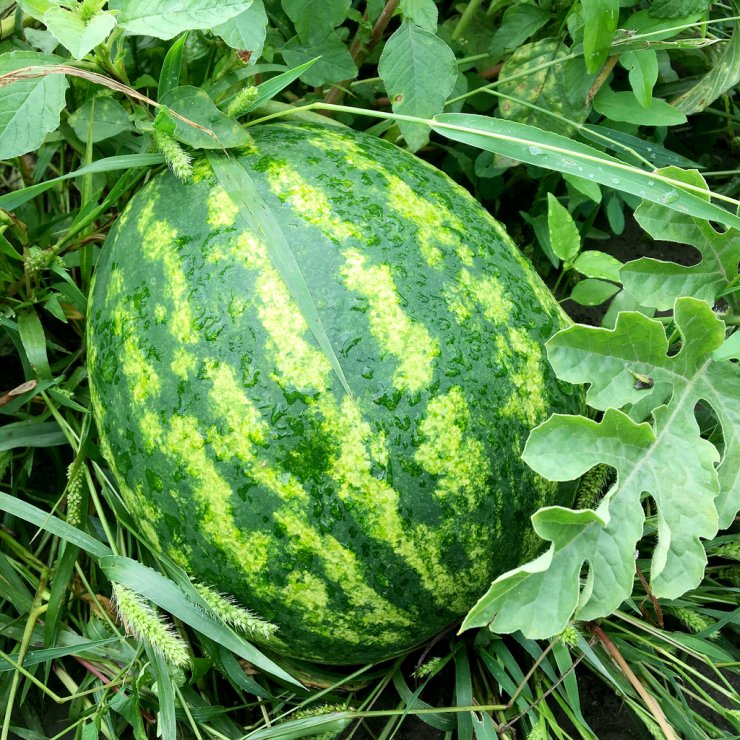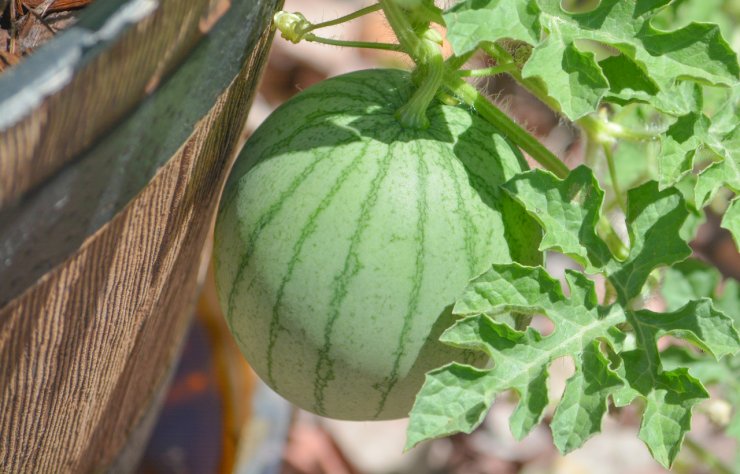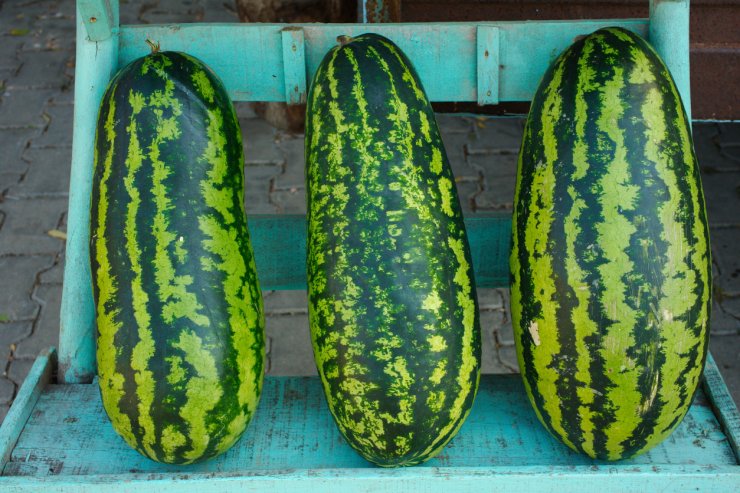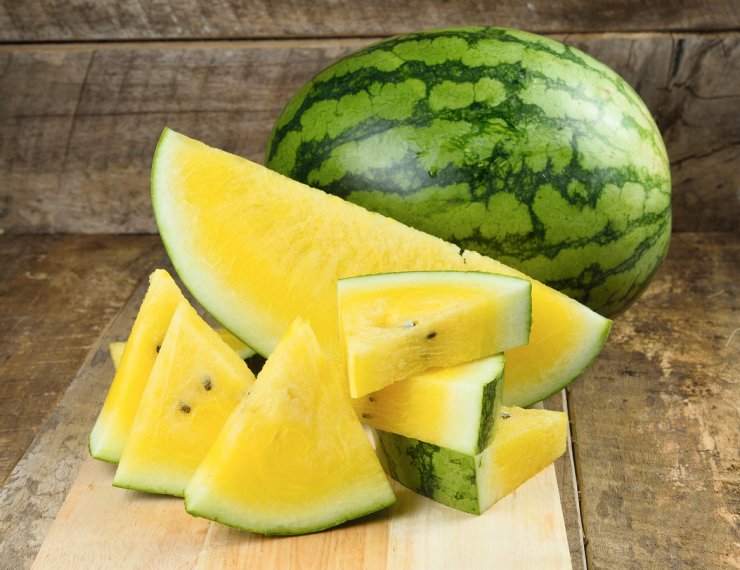
Large Watermelon
There are three types of watermelon, of which different varieties will be either seeded or seedless. These are mini or icebox, picnic, and yellow/orange.

Sugar Baby Watermelon growing in a bed
Icebox watermelons are what you might expect—smaller varieties intended to feed a small family and fit in the refrigerator, weighing in at 7 to 10 pounds. These also tend to require less space to grow, which can be an important consideration for the home gardener. The Sugar Baby and Tiger Baby are well-known icebox watermelons.

Jubilee Watermelons
Picnic watermelons tend to be larger, from 16 to 45 pounds or more, perfect for a picnic gathering. These are the traditional oblong or round melons with a green rind and sweet, red flesh. Popular picnic watermelons are Charleston Gray, Black Diamond, Jubilee, Allsweet, and Crimson Sweet.

Sliced yellow watermelon
Yellow/orange watermelons are, as you can guess, not pink or red as traditional watermelons are, but yellow or orange on the inside. They lack the lycopene that gives the standard watermelon its rich red flesh. Some of these are also smaller, so that they can be a good homegrown choice. They include Desert King, Tendergold, Yellow Baby, Yellow Doll, and seedless varieties such as Chiffon and Honeyheart.
Watermelons, as a whole, are 6% sugar. So whichever type you choose, you’ll still get that mouthwatering, sweet flavor that says “summer” to so many people.
Out of the 1,200 varieties of watermelon, many are suitable only for commercial growers for various reasons. In particular, seedless melons are very expensive seeds to buy because of the extra work required to create them.
Also, seedless watermelon seeds must be kept at a constant 90 degrees Fahrenheit until emergence, making seedless watermelon growing more of a challenge for the home grower.
Unlike other fruits, the varieties of watermelon all have similar flavor varying only in sweetness, size, space requirements, and time to harvest. All of these varieties can be used in any recipe, so choose your watermelon based on these characteristics instead of ultimate use.
We’ve included several varieties in our Plant Profiles section—most seeded and one seedless—that offer different characteristics favorable to the home grower.
What types of watermelons do you grow? In what area do you live? Care to share your watermelon-growing tips for your region? Please comment below!


 Previous
Previous

